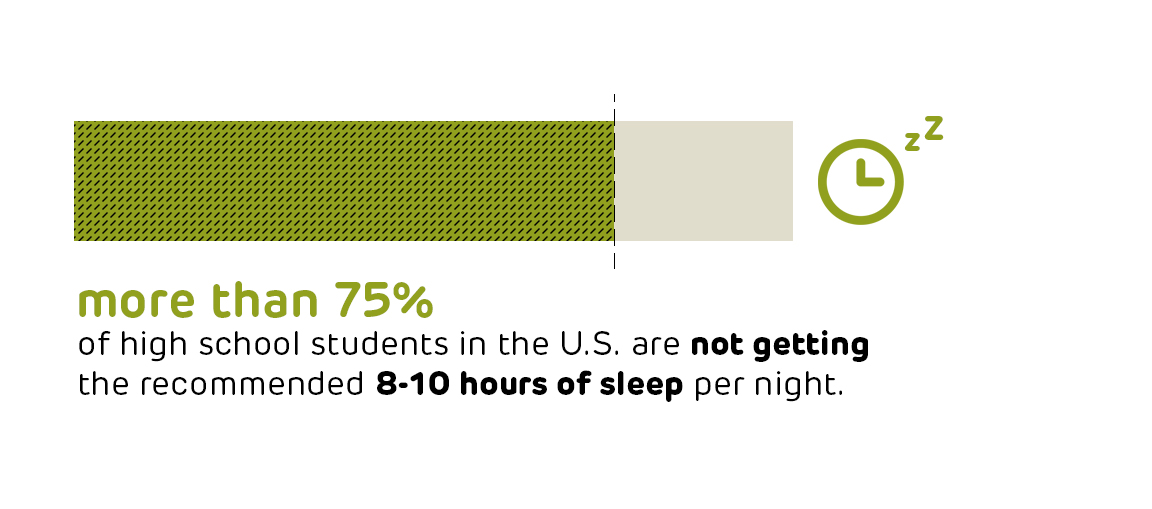Using Mobile Technology to Assess the Impact of Home and Neighborhood Context on Sleep Among Urban Teens
Statement of Problem
More than 75% of high school students in the United States are not getting the recommended 8-10 hours of sleep per night. Insufficient sleep is a critical public health concern as it increases risk for cardiovascular disease, hypertension and type 2 diabetes.
Adolescents from low-income urban communities are especially susceptible to not getting enough sleep. Research suggests that neighborhood stressors, such as crime and physical disorder like litter or vacant lots, may also adversely affect adolescent sleep duration and quality. Greater exposure to these stressors often leads adolescents to engage in less physical activity and more sedentary, screen-based activities, which are linked to poor sleep outcomes. In contrast, green space is a protective neighborhood feature that may buffer stress, lower risk of exposure to violence and support healthy sleep, although few studies have examined this association with sleep specifically. In addition, environmental exposures within the home like noise, light and uncomfortable temperatures may also negatively impact sleep.
While prior studies have focused on where adolescents live, no studies of adolescent sleep have considered neighborhood context dynamically by accounting for all places in which teens spend time. Most urban adolescents spend lots of time outside of their home, limiting our understanding of how their environment impacts sleep. GPS-enabled smartphones offer an innovative opportunity to overcome the limitations of past studies by developing ways to measure adolescent’s total exposure to their neighborhood environments across home, school and other locations where they spend time. We can then gain a better understanding of how environmental factors like crime and greenspace affect teen sleep. Smartphones also allow us to obtain information on a daily basis on home environmental factors that might impact sleep, and we can learn how these factors vary between nights.
Description
Using Mobile Technology to Assess the Impact of Home and Neighborhood Context on Sleep Among Urban Teens
Using Mobile Technology to Assess the Impact of Home and Neighborhood Context on Sleep Among Urban Teens


Insufficient sleep among adolescents is a critical public health concern as it increases risk for cardiovascular disease, hypertension and type 2 diabetes.
Dr. Stephanie Mayne and her team are using mobile methods and geographic information systems (GIS) technology—a framework for gathering, mapping and analyzing geographic data such as the locations of crime incidents or parks—to learn more about neighborhood factors impacting teen sleep in the Teen Neighborhood Activity Patterns and Sleep (Teen NAPS) study. In this study, the team will enroll 160 adolescents ages 15-18 throughout Philadelphia and use smartphone GPS tracking to measure their exposure to neighborhood crime, disorder and green space during their daily activities, as well as brief daily surveys to assess home sleep environment problems. The researchers will then examine associations of neighborhood features and home environments with multiple sleep outcomes, including sleep duration, timing and quality.
This project builds on a prior pilot study, known as the Get to Sleep study, which enrolled 25 adolescents. In the Get to Sleep study, the team found that using GPS tracking, GIS, and repeated text message surveys over one week was feasible and acceptable to adolescents.
Next Steps
Understanding the factors that impact sleep in adolescence is a key public health challenge that we must address to support sleep and improve health. Through this study, we hope to identify factors associated with insufficient sleep, a growing health concern that is linked with numerous adverse health outcomes among adolescents. We also aim to develop a model for assessing dynamic neighborhood exposures that researchers and public health practitioners can apply to a wide range of health behaviors and outcomes to inform place-based interventions, population health strategies, or clinical assessments to support health among children and teens within many contexts.
This project page was last updated in July 2022.
Suggested Citation
Children's Hospital of Philadelphia, PolicyLab. Using Mobile Technology to Assess the Impact of Home and Neighborhood Context on Sleep Among Urban Teens [Online]. Available at: http://www.policylab.chop.edu. [Accessed: plug in date accessed here].